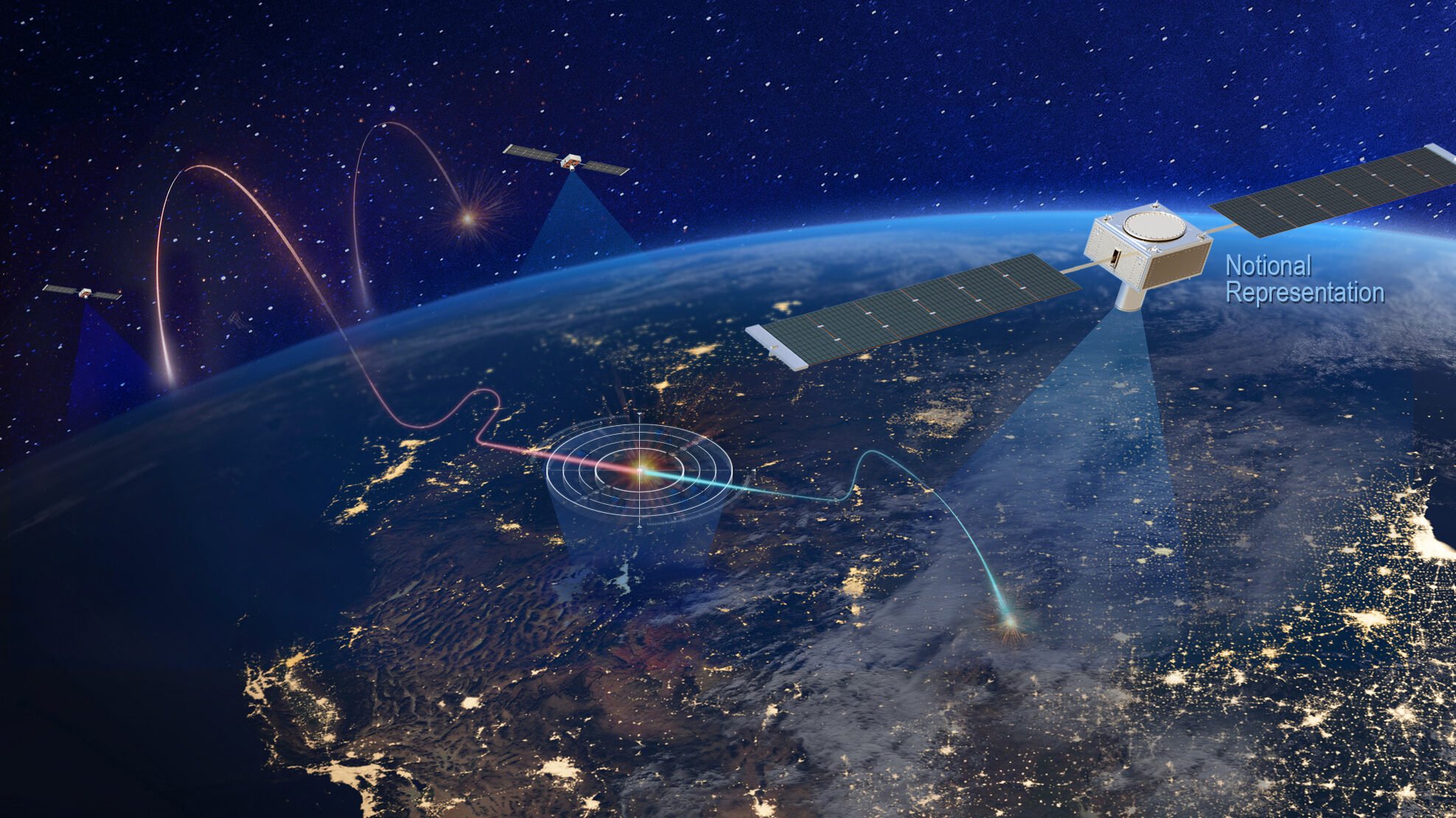
HBTSS satellites will provide continuous tracking and handoff to enable targeting of enemy missiles launched from land, sea, or air. They are a critical part of the Overhead Persistent Infrared (OPIR) multi-layered constellation of satellites, which can sense heat signatures to detect and track missiles from their earliest stages of launch through interception. (Graphic courtesy of Northrop Grumman)
SATELLITE 2023 — Defense giant Northrop Grumman is testing out virtual reality goggles and motion-capture suits to virtually put together components for a pair of new satellites meant to keep watch over the northern hemisphere.
The company said during a “recent demonstration” it used its Highly Immersive Virtual Environment (HIVE) at its facility in Redondo Beach, Calif., as part of a push to use “digital technology” to aid the development of the Next-Generation Overheard Persistent Infrared (OPIR) Polar sats, in hopes of speeding timelines and keeping costs lower than through traditional, hands-on processes.
A company release Tuesday said HIVE “allows engineers to design, build, maintain and service satellites in virtual reality before any hardware is manufactured or procured. Real-time modeling, simulation, visualization and human interaction reduce technical costs and risks early in the development phases.” Defense contractors, like their civilian-focused counterparts, are increasingly integrating digital and virtual environments into their development process.
“With digital engineering, everything is sooner. So, if you get it right, everything is faster, cheaper,” then-Air Force acquisition czar Will Roper said in 2020. “I guess if you’re a Star Wars fan, digital engineering makes everything ‘quicker, easier and more seductive’ — but it’s certainly not the Dark Side of the Force […]. This is the virtuous, Light Side of the Force and we’re using our powers for good, so it definitely is accelerating everything beyond any expectations that we’ve had of programs in the past.”
Northrop previously said it was using HIVE to early in the development process for the B-21 bomber, using assessments from the VR tech to change how the recently revealed next-gen plane was built.
As for the satellites in question, Northrop said they will “provide precise, timely sensor coverage over the northern hemisphere to help deter and defend against ballistic and hypersonic missiles.” It was a year ago that Northrop announced a partnership with Ball Aerospace for the two sats, part of a $1.9 billion contract from the Space Force’s Space Systems Command.
OPIR, which is the Space Force’s biggest missile warning effort, saw its budget trimmed in the service’s fiscal 2024 request. The service has asked for $2.6 billion, vice the $3.4 billion enacted last year.






















